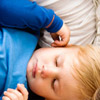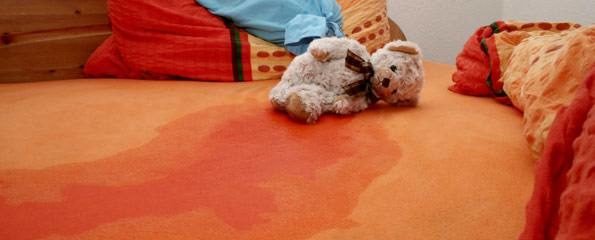Bed wetting treatments
Statistics show that only 34% of Australian families with a child who wets the bed seek professional help. Instead, they wait for what’s called ‘spontaneous remission’, where the child grows out of bed wetting naturally, something that does eventually occur in many children, but not all. It’s a concerning statistic when you consider the impact that bed wetting can have on an individual (affecting everything from self-esteem to their relationships with friends and parents, even when bed wetting occurs as little as once a month), and understand that the majority of techniques that families try themselves to solve the problem don’t work. In comparison, proper treatment for bed wetting can be effective in more than 90% of cases.
The initial treatment for a child with a bed wetting problem is an alarm. The idea is that after a period of time, alarm therapy improves arousal from sleep, helping to alert and sensitise the child to respond to a full bladder when they’re asleep.
Two types of enuresis alarms are available in Australia– the pad-and-bell alarm consists of a soft rubber mat which is connected to an alarm unit. The mat is placed on the bed and covered with sheets. The alarm rings as the child begins to wet. The personal or body-worn alarm consists of an alarm unit and sensor. The alarm unit is clipped onto the child’s pyjamas and the sensor is placed inside the pants. Once the sensor becomes wet, the alarm sounds. Studies show that around two-thirds of children treated with alarm therapy become ‘dry’ during the period of time that they use the alarm, and about half of those remain dry without the need for further treatment.
It’s generally recommended that alarm treatment be continued for up to 3 months, with the recommendation being that a child uses the alarm until they achieve 14 consecutive dry nights.
Medications are also available to treat bed wetting. One of them has an active ingredient called desmopressin. It works like the naturally occurring substance vasopressin which is produced in the brain. This medication is effective for children who wet the bed as a result of low levels of vasopressin during the night. Taking desmopressin supplements the body’s natural vasopressin, reducing the amount of urine produced during the night and thus helps the child stay dry.
An anticholinergic medication called oxybutynin may be used if a child has an overactive bladder during sleep. Tricyclic antidepressants such as imipramine are also approved for the treatment of bed wetting but they are not recommended as often because of their potential side-effects.
Hypnosis, acupuncture, psychotherapy, reward systems and fluid restriction are other forms of treatment that you might hear about but their effectiveness in managing bed wetting has not been established.
 | For more information about bed wetting including lifestyle advice, how the urinary system works and much more, see Bed Wetting (Nocturnal Enuresis). |
References
- Caldwell PHY et al. Bed wetting and toileting problems in children. Med J Aust 2005; 182(4): 190-5. [Abstract | Full text]
- Moulden A. Management of bed wetting . Aust Fam Physician. 2002; 31(2): 161-3. [Abstract]
- Robson WL. Clinical practice: Evaluation and management of enuresis. N Engl J Med 2009; 360(14): 1429-36. [Abstract]
- Norgaard JP. Nocturnal enuresis pathogenesis: Pathogenesis and therapeutic implications. Sydney,Australia, 1992, Oxford Clinical Communications.
- Lottmann HB, Alova I. Primary monosymptomatic nocturnal enuresis in children and adolescents. Int J Clin Pract Suppl. 2007; (155): 8-16. [Abstract]
Dates
Tags
Created by:

 Login
Login














